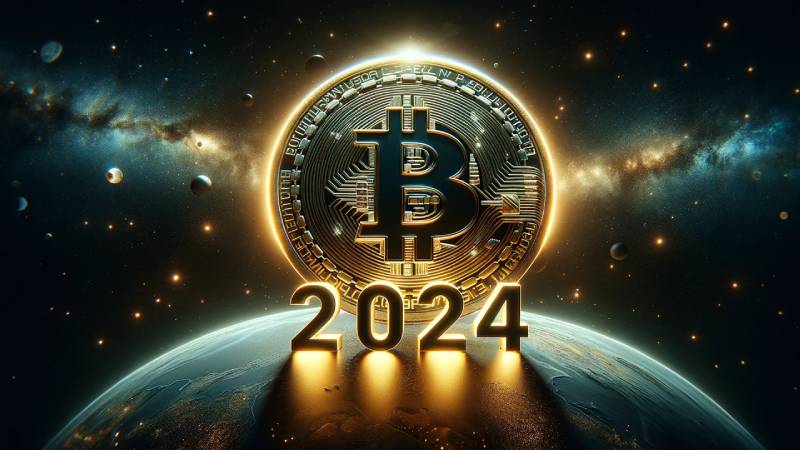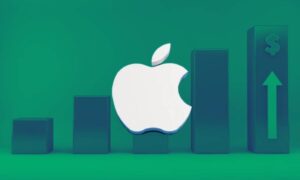Satoshi Nakamoto is an unknown person or group who created the digital currency Bitcoin on January 3, 2009. This gave birth to the entire cryptocurrency industry, which has become increasingly mainstream.
Bitcoin prices have been on a roller coaster ride in recent months. However, something known as a Bitcoin “halving” could soon happen, causing Bitcoin to soar to new highs later this year. Bitcoin halving is a technical event that occurs every four years and reduces the reward for mining new Bitcoins by half. This feature is important for understanding how Bitcoin works.
In mid-April, the reward a miner receives for minting new Bitcoins will be halved from 6.25 Bitcoins to 3.125 Bitcoins. This happens every four years and continues until all 21 million Bitcoins have been mined. The exact date of the halving is not yet known, but it is expected to occur on or before April 19th.
Halving was built into Bitcoin’s code from the beginning to ensure scarcity and protect against inflation. Previous halving events have coincided with significant price increases for Bitcoin.
Here’s what you need to know about the upcoming Bitcoin halving, how it will affect the price of Bitcoin, and more.
What is Bitcoin mining? How are Bitcoins generated?
Bitcoins are generated by miners who use computer hardware to solve complex mathematical problems and verify transactions on a blockchain network. In return, miners receive a predetermined amount of Bitcoin for each block of transactions they process.
Rewards paid to miners who validate transactions are a way to create more Bitcoins. The first Bitcoin block, also known as the Genesis block, was created by Nakamoto in 2009 and was rewarded with 50 Bitcoins.
Why is Bitcoin Halving Important?
The supply of Bitcoin is limited to a maximum of 21 million coins. This means that once this 21 million limit is reached, no more coins will be generated or created. Nakamoto introduced the concept of Bitcoin halving to limit the supply of cryptocurrencies and increase the value of cryptocurrencies in the fight against inflation. This is why the Bitcoin halving is important, as it prevents the chaotic creation of Bitcoin.
When were other Bitcoin halving events held?
The Bitcoin blockchain creates 210,000 new blocks in about 4 years. It complies with standards set by developers. The first reward was 50 Bitcoins in 2009 when the Bitcoin price was approximately 0.
- The first Bitcoin halving took place on November 28, 2012, when the reward for mining a block was reduced from 50 Bitcoins to 25 Bitcoins. At the time, the price of Bitcoin was $12.
- The second halving event took place on July 9, 2016, and the reward was reduced from 25 Bitcoins to 12.5 Bitcoins. The price of the cryptocurrency at that time was $658.
- The third most recent halving occurred on May 11, 2020, when the Bitcoin incentive was halved to 6.25 Bitcoins. At this point, Bitcoin was worth $8,601.
Bitcoin’s next halving is expected to occur on or before April 19th, and mining rewards will drop to 3,125 Bitcoins. This process will continue until around 2140. This means that after the halving in 2024, there will be 29 more halving events before the final reward of just 1 SATOSHI (the smallest unit of Bitcoin) is awarded.
What happened after the last Bitcoin halving event? Is now a good time to buy Bitcoin?
Bitcoin halvings have historically pushed up the price of cryptocurrencies.
For example, after the first Bitcoin halving in 2012, the price was $12. After 100 days, it rose to $44, and after 300 days, it rose to $135.
Similarly, after halving in 2016, the flagship cryptocurrency rose from $658 to $1,551 in 300 days.
And in the last half of 2020, the price rose from $8,601 to $50,941 in 300 days.
His CoinGecko, a cryptocurrency tracking website, points out that the price of Bitcoin has increased by 103,877% since 2013. Bitcoin was trading at around $70,000 in mid-April, just 4.4% below its all-time high set on March 14, 2024. Some key figures in the crypto industry believe the price of Bitcoin could rise to $100,000.
How long does it take to mine Bitcoin?
Satoshi Nakamoto capped the supply of Bitcoin at 21 million, limiting the number of Bitcoins that could exist. As of March 2024, approximately 19.65 million Bitcoins were in circulation, but only approximately 1.35 million Bitcoins could be released through mining rewards. It is estimated that by 2140, when all 21 million Bitcoins have been mined, the network will stop creating new Bitcoins.
What will happen to the miners once all Bitcoins are mined?
Bitcoin miners generate revenue through block rewards and transaction fees. Once all 21 million Bitcoins are mined, the block reward will be zero. However, miners may still derive some of their income from transaction fees.
Will miners suffer losses if their rewards are halved?
After Bitcoin’s halving, miners’ block rewards will be cut in half. This year, it will be reduced from 6.25 Bitcoins to 3.125 Bitcoins.
In the short term, reduced block rewards may impact miners, forcing them to invest in more advanced mining equipment to remain competitive. However, as has always been the case after previous halvings, the price of Bitcoin is likely to rise. This means that miners can earn sufficient profits even if the Bitcoin reward is reduced.
What impact will Bitcoin halving have on the environment?
Bitcoin mining is notoriously energy-intensive, raising concerns among climate change activists who are calling for it to be banned. According to an online tool from the University of Cambridge, Bitcoin’s annual energy consumption is equivalent to that of Switzerland.
Experts are looking for more environmentally friendly ways to produce Bitcoin, and there are concerns about the impact the halving will have on electricity consumption.
Every time Bitcoin is halved, the competition to verify transactions increases. This is forcing miners to switch to advanced ASIC mining rigs that maximize productivity and minimize power consumption. So while Bitcoin halving may help a little, it’s clearly not a “greener way” to generate Bitcoin.
- Jerry Rice Award History: Every Winner of the FCS Freshman Award - December 13, 2025
- When Do New Episodes of Taylor Swift’s The End of an Era Drop? | Schedule, Dates & Updates - December 13, 2025
- When Does ‘Matlock’ Return? 2026 Premiere Date Guide - December 12, 2025




